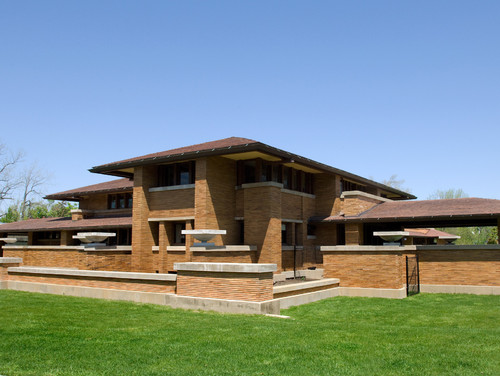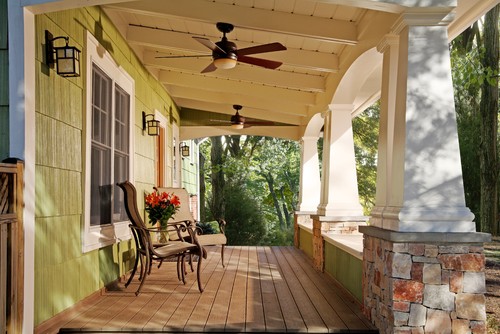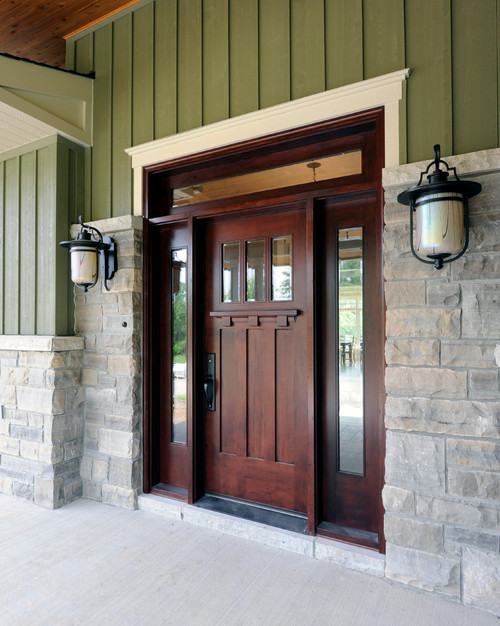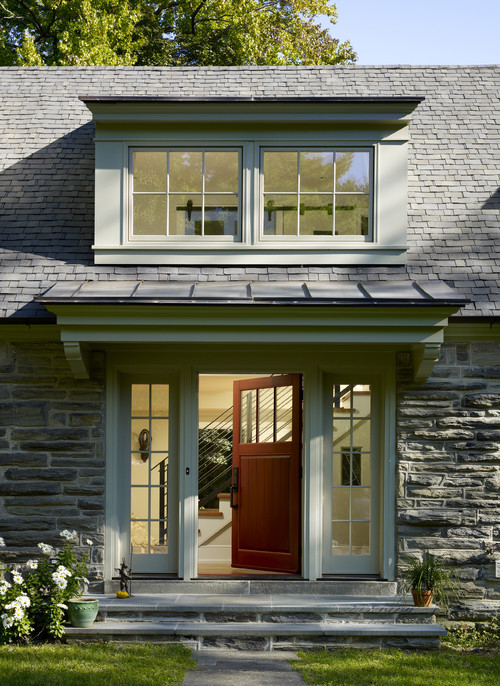Craftsman architecture and the whole Arts & Crafts movement in the late 19th century was in part a return to simpler design after the heavily ornamented Victorian homes. It was also a reaction to the industrial revolution and the beginning of mass produced goods. The pioneers of the movement William Morris, Gustav Stickley and even Frank Lloyd Wright all wanted architectural design that illustrated craftsmanship and worked with the environment. Craftsman homes were intended to convey sturdiness with their square and simple styles.
So what are the features of a Craftsman home?
How do you look at a home and know that it’s a Craftsman? Let’s explore some of the features that define the Craftsman movement and architectural design.
Low Pitched Gabled Roofs – The rooflines are meant to blend with the surrounding landscapes, typically with a wide and unenclosed overhanging eaves with decorative supports. Low gabled roofs were more common in California Craftsman home, the bungalows and foursquares in the Midwest had steeper roofs because of the climate.
Front Porch – Front porches are a staple of Craftsman homes, even if it just simply covers the entryway to the home. Most porches are the full width of the house, while some are a partial width. The porch is either sheltered under the main roof or a small separate extended partial roof. Porches extend the livable spaces of smaller bungalows and foursquares, they also act as a transitional space between the inside and outside.
Tapered Columns – Tapered columns are one of the most distinctive characteristics of a Craftsman. They will have some variation in the detailing; supporting the porch roof they usually rest on brick or stone piers that go right to the ground. Installing the distinctive porch supports is a great way to add the Craftsman style to your existing home.
Multipaned Windows – This style like others, came from the Prairie school in the Midwest the most common type of multipaned windows are either 6 panes over 1 or 4 panes over 1 double hung windows. Craftsman homes tend to have many windows allowing in lots of natural light, often these windows are grouped together with a wide trim. These windows work wonderfully on homes set on hills with great views, the bottom pane has no obstruction.
Distinctive Doors – Craftsman homes have distinctive doors with glass panes in top. The window in the doors is a smaller version of the multipaned windows, with a thick piece of trim. Swapping out your existing door for a Craftsman style door is another way to add Craftsman features to your home.
Earth Tone Paint Colors – Craftsman homes are meant to blend and be part of the surrounding environment. Look to nature when choosing a color for your home, use one or two contrasting colors to highlight features for trim. Using a richer color on trim will highlight the architectural features that make your home a Craftsman.
Single Dormers – When dormers are present, they are fairly common in the Foursquare, there is usually only one wide one as opposed to the pairs of dormers you will find on a Cape Cod style home. The single dormers are often big enough for multiple windows and can create usable space in attics by adding some additional square footage. In keeping with Craftsman style they also allow in plenty of natural light.
Stone Detail – There is usually a variety of materials that make up a Craftsman home, siding is often wooden clapboard but the architectural features like porch piers use brick, stone and concrete.
Exposed Rafter Tails and Beams – This reflects the Arts & Crafts influence it sought to show the handcrafting that went into the construction of these styles of homes, and it is another distinct characteristic of a Craftsman. This is also where you can use some richer color to make the feature stand out. You can add these features to any deep roof to add that Craftsman style to your home.
Knee Braces – The are used instead of the rafter tails and they are often decorative underneath any deep roof.
These are some of the features that are commonplace in Craftsman architecture. The Craftsman movement was more than just design it was the spirit of an age. It had influences from all over the US and in England, designers and architects contributed to the success and variety in Craftsman homes. You can read more about the history of the Craftsman movement here and more on the designers and architects here.








Leave a Reply